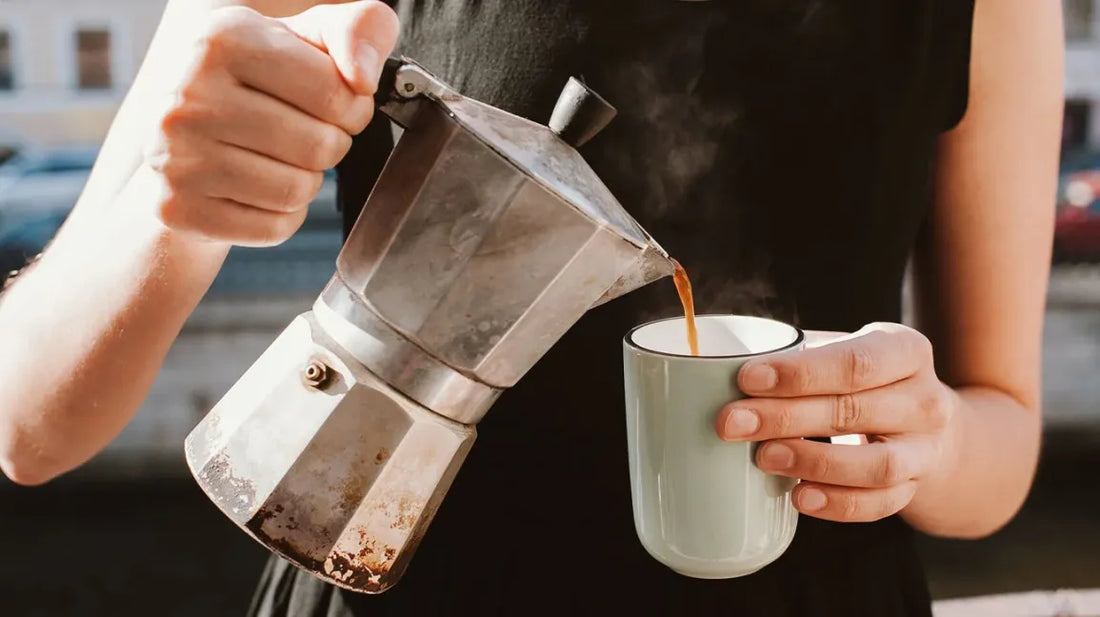
The Truth About Coffee Acidity: Is Low-Acid Coffee Better?
Share
TLDR;
Low-acid coffee can be better for individuals with sensitive stomachs or acid reflux, offering a smoother, gentler brew. However, it's not universally "better"—flavor, origin, and health trade-offs matter depending on personal needs and preferences.
Why Coffee Acidity Matters More Than You Think

At Milk & Honey Coffee Co., we talk to people every day who love coffee—but not what it does to their stomach. Some chase flavor complexity; others just want a cup that won’t leave them doubled over.
The real story of coffee acidity isn’t just about pH or marketing buzzwords. It's a layered tale of chemistry, flavor science, roasting practices, and yes—gut health. Let’s break it down clearly, practically, and from all sides.
What Is Coffee Acidity, Really?

Coffee acidity means two things:
-
Sensory acidity: the tart, bright, fruity notes you taste
-
Chemical acidity: the actual pH level of your brew
Both play a role in how coffee feels in your mouth and your stomach.
Common Acids in Coffee:
-
Chlorogenic acid – known for antioxidant benefits, breaks down during roasting
-
Citric acid – gives a citrus-like brightness
-
Malic acid – found in apples, offers a smooth tartness
-
Quinic acid – produced during roasting; can cause stomach discomfort
Typical pH Range:
-
Brewed coffee: pH 4.85 to 5.3
-
Water (neutral): pH 7
-
Low-acid coffee (marketing claim): pH above 5.5
So while all coffee is technically acidic, the amount and type of acid matter.
What Does “Low-Acid” Coffee Actually Mean?

The term “low-acid” isn’t regulated. It’s often just marketing. But according to Wikipedia, the “critical pH line” is 5.5—above which coffee is considered easier on the stomach.
Be Skeptical of Marketing
Some brands slap on “low-acid” without lab tests. True low-acid coffee usually meets these criteria:
-
Lab-tested to show pH above 5.5
-
Uses roasting or brewing methods that neutralize acid
-
Often sourced from regions with naturally less acidic beans
What Naturally Reduces Acidity in Coffee?

You don’t need a special brand to cut the acid. Sometimes, just changing your brewing or buying habits can help.
Roast Level
-
Dark roasts have less chlorogenic acid
-
Roasting longer breaks down acid compounds
Brewing Method
-
Cold brew reduces acid by up to 70%
-
French press keeps oils that can mask acidity
-
Espresso can be lower in perceived acidity due to pressure and crema
Bean Origin
-
Low-acid regions: Brazil, Sumatra, Guatemala
-
High-acid regions: Ethiopia, Kenya, Yemen
Additives & Methods
-
Swiss Water Process decaf retains flavor, lowers acid
-
Add milk or almond milk: proteins can buffer stomach acid
-
Tiny pinch of baking soda: raises pH slightly
Does Low-Acid Coffee Help With Health?

This is where the benefits can be significant—especially if you’re prone to:
-
Acid reflux (GERD)
-
Heartburn
-
Indigestion
-
Stomach ulcers
-
Dental erosion
Medical Insight:
-
Verywell Health suggests low-acid coffee may help reduce reflux triggers
-
NY Post features dietitians recommending cold brew or dark roasts for GERD sufferers
However, low acid isn’t zero acid, and effects can vary by person. Always consult a healthcare provider if symptoms persist.
Coffee Acidity and Flavor: What’s the Trade-Off?

Lower acid doesn’t always mean better taste.
-
Higher-acid coffees tend to be more floral, citrusy, and vibrant
-
Lower-acid coffees are often earthy, chocolaty, and smooth
It’s about preference. Some people love the brightness of an Ethiopian Yirgacheffe. Others prefer the mellow body of a Sumatran dark roast.
The North Carolina Coffee Context

As a North Carolina-born company, Milk & Honey Coffee Co. understands how local water and roasts affect acidity.
Regional Variables:
-
Water hardness: Soft water in Raleigh vs. mineral-rich water in Asheville can affect how acid is perceived
-
Roasters to watch:
-
Counter Culture Coffee (Durham) – known for balanced acidity
-
Black & White Coffee Roasters (Wake Forest) – offers roast options with lower acidity profiles
-
Counter Culture Coffee (Durham) – known for balanced acidity
We’ve done side-by-side brews of the same beans across NC cities—and they taste noticeably different. Water and grind matter more than you think.
Practical Guide: How to Enjoy Lower-Acid Coffee

When Shopping:
-
Look for labels like:
-
“Low-acid”
-
“Stomach-friendly”
-
“Smooth roast”
-
pH above 5.5 (if stated)
-
“Low-acid”
Brewing Tips:
-
Use cold water and steep for 12–18 hours for cold brew
-
Choose coarse grind
-
Use filtered water to balance mineral content
-
Add a splash of milk to smooth acidity
-
Avoid overheating your water—ideal temp is 195°F–205°F
Taste Testing Tips:
-
Acidity = “brightness” on the tongue
-
Low-acid = smoother, sometimes flatter
-
Add sweeteners or cinnamon after brewing to preserve balance
FAQs: Coffee Acidity Questions We Get at Milk & Honey Coffee Co.
Is cold brew really less acidic?
Yes. It’s brewed without heat, which leaves behind many of the acid-forming compounds.
Does decaf help with reflux?
If it’s Swiss Water Processed—yes. It’s gentler than chemical decaf and retains low acidity. It also raises common hydration questions—Does Decaf Dehydrate You?—which we address separately.
Can milk neutralize coffee acid?
Yes. Dairy and even oat milk help buffer acid and soften taste.
Is espresso more acidic than drip coffee?
Not necessarily. It’s about the beans, roast, and pressure. In many cases, espresso feels smoother.
Does light roast mean higher acid?
Typically, yes. The shorter roast preserves more natural acids.
Our Favorite Low-Acid Coffees You Can Try
Here are picks based on roast, pH, and flavor—plus some NC options:
|
Brand/Origin |
Roast |
Avg pH |
Notes |
|
Lifeboost Low Acid Coffee |
Medium |
6.0 |
Organic, stomach-friendly |
|
Trücup |
Dark |
5.8 |
Smooth, easy on the gut |
|
Golden Ratio |
Blonde |
6.1 |
Very mild, nutty flavor |
|
Counter Culture Hologram |
Medium |
5.2 |
Local NC favorite, complex flavor |
|
Sumatra Mandheling |
Dark |
5.6 |
Naturally low-acid origin |
Choosing the Best Coffee for Your Body and Your Taste

There’s no one-size-fits-all answer. But here’s what we tell our customers:
-
If taste is your top priority—experiment with roasts and regions
-
If stomach comfort matters—try cold brew, darker roasts, or low-acid brands
-
If health is a concern—talk to a dietitian, and test what works for your body
At Milk & Honey Coffee Co., we serve both sides. Whether you crave a citrusy punch or a mellow cup that loves your gut back, we’re here to help you brew better.
